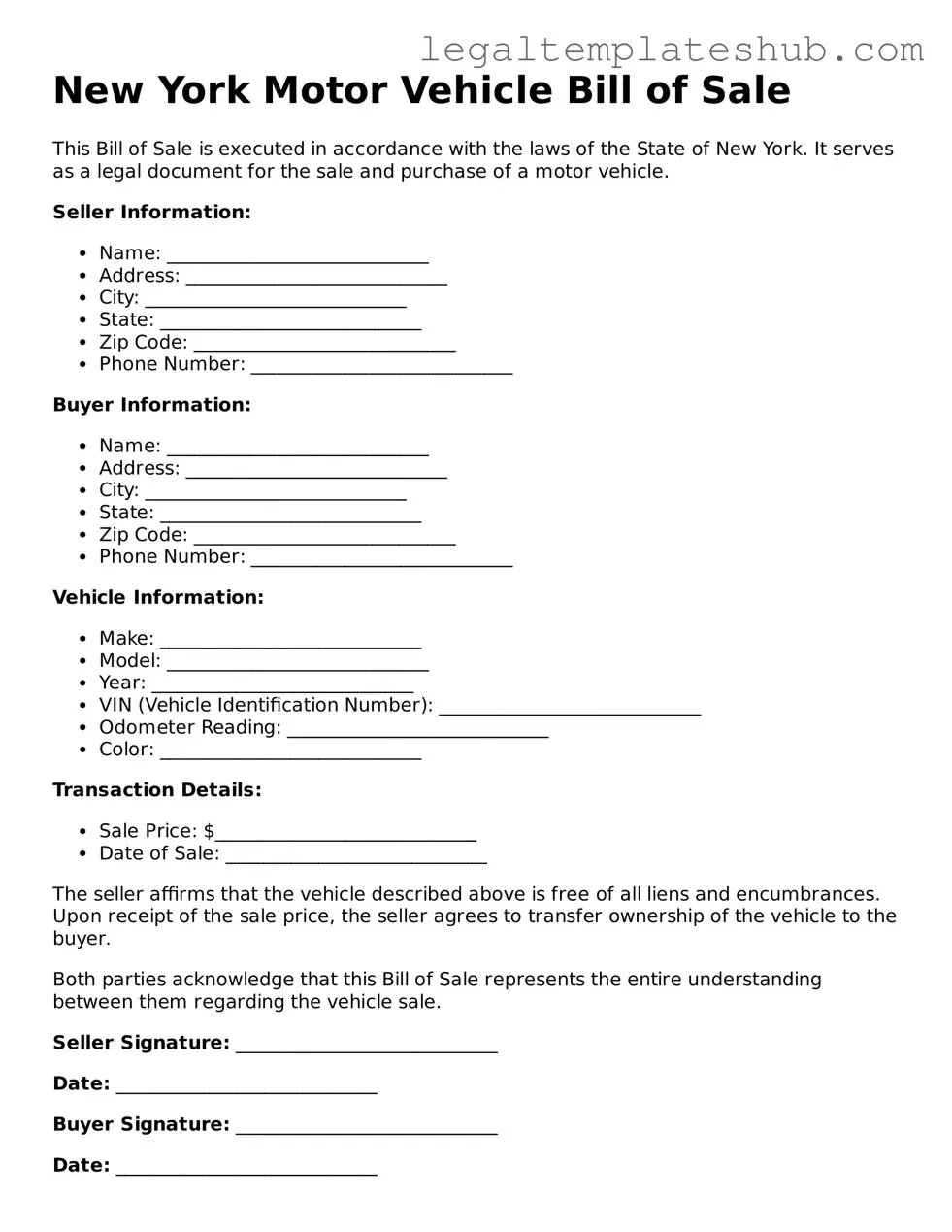Printable Motor Vehicle Bill of Sale Document for New York
The New York Motor Vehicle Bill of Sale form serves as a legal document that records the transfer of ownership of a motor vehicle from one party to another. This form includes essential details such as the vehicle's make, model, and identification number, as well as the buyer and seller's information. Completing this form is a crucial step in ensuring a smooth transaction; fill it out by clicking the button below.
Access Editor
